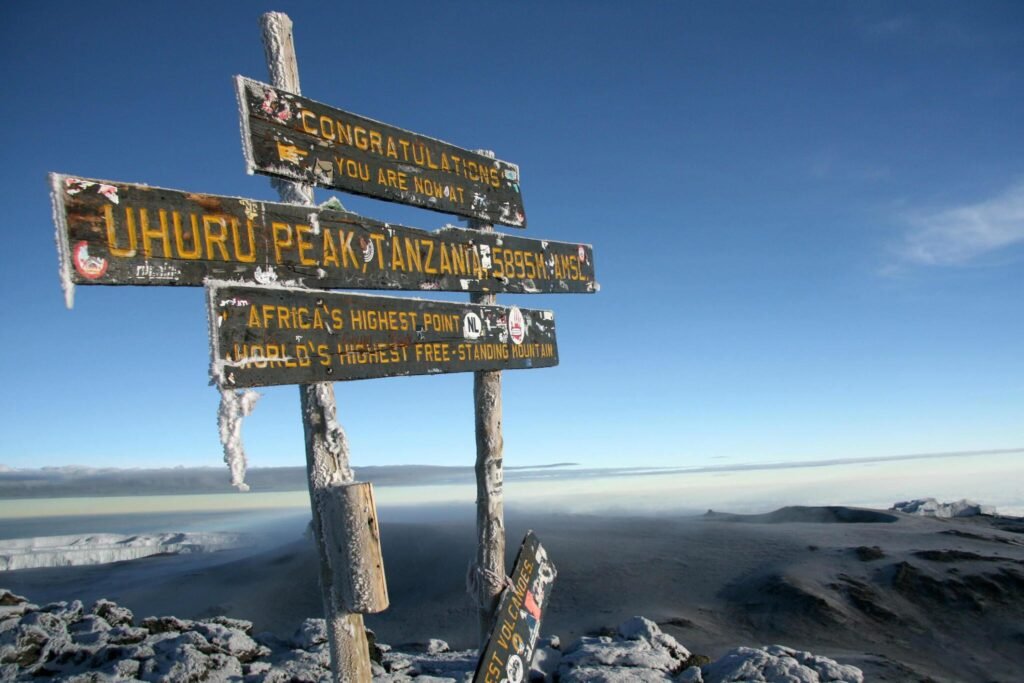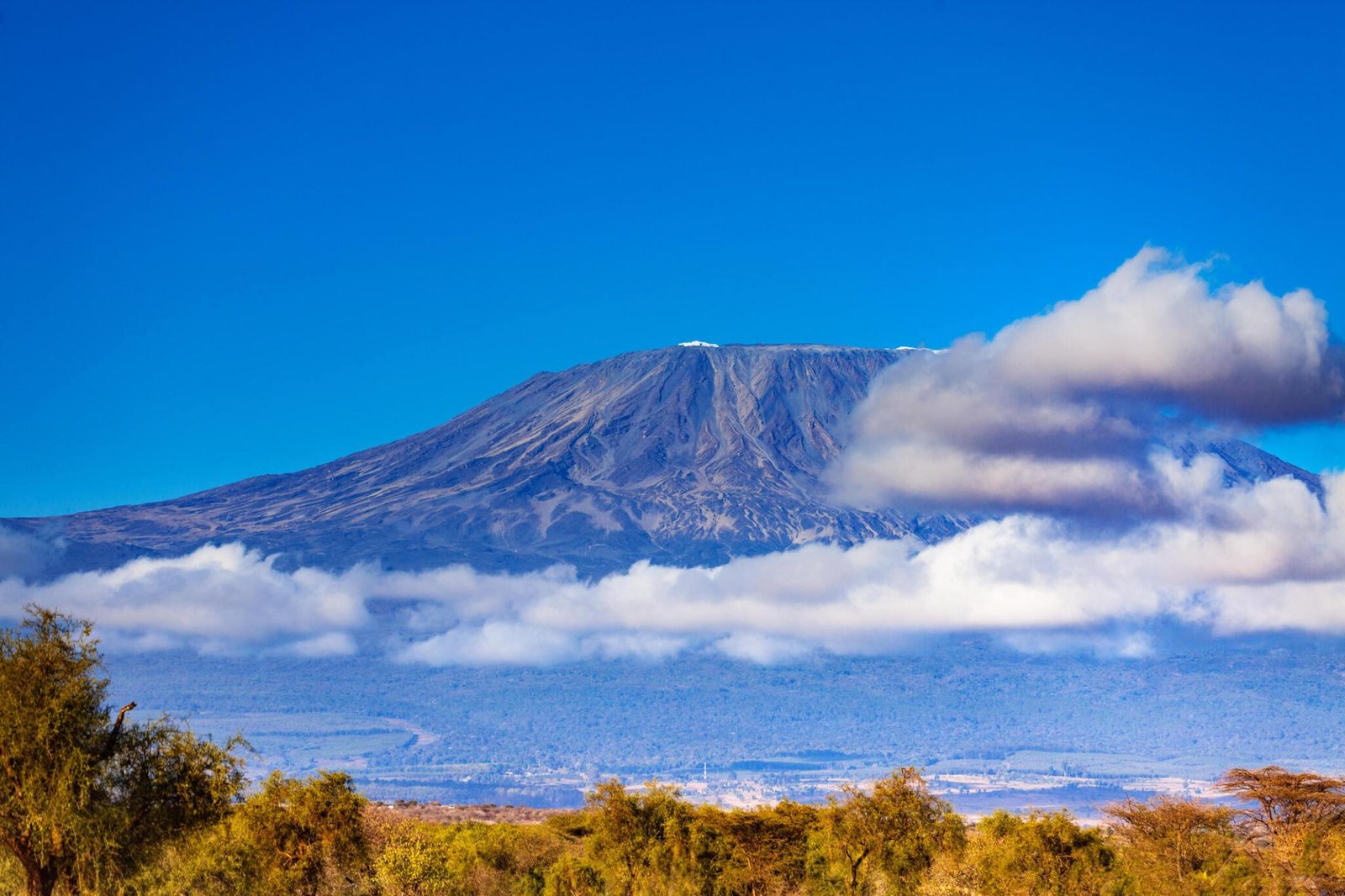Mount Kilimanjaro’s weather is one of the most important factors to consider when planning a trek. This majestic peak, the highest in Africa, has five distinct ecological zones, each with its own weather patterns. Understanding the variations in weather across these zones and throughout the year can greatly improve your chances of a successful climb. In this guide, we’ll explore the various weather conditions on Mount Kilimanjaro, how they affect different climbing routes, and what you need to prepare for each season.
Learn more about Kilimanjaro’s ecosystem and climbing routes here.

How Weather Affects Kilimanjaro Climbs
Kilimanjaro’s unique location near the equator means that it doesn’t experience the traditional four seasons seen in other parts of the world. Instead, the weather on Kilimanjaro is influenced by the alternation between wet and dry seasons. These seasonal variations greatly impact the climbing conditions, trail difficulty, and visibility.
- Rainy Seasons: Kilimanjaro experiences two main rainy periods – the long rains from March to May and the short rains from November to December.
- Dry Seasons: The best climbing conditions are during the dry seasons, which run from June to October and January to February.
Planning your climb during the dry season is highly recommended, as the trails are less slippery, and there are fewer risks of weather-related delays. For more details on the best months to climb, check this resource.
Temperature Variations on Kilimanjaro
As you ascend Kilimanjaro, you will pass through five distinct climate zones, each with varying temperatures:
- Cultivation Zone (800m – 1,800m): This area at the base of Kilimanjaro is warm, with temperatures averaging between 25°C to 30°C (77°F to 86°F). The weather is generally mild, but occasional rain showers are common.
- Rainforest Zone (1,800m – 2,800m): Temperatures cool down as you move into the rainforest, where you can expect humid conditions with frequent rain, especially during the wet seasons. Daytime temperatures are around 15°C to 20°C (59°F to 68°F).
- Heath/Moorland Zone (2,800m – 4,000m): Here, the air becomes drier and cooler, with daytime temperatures ranging from 5°C to 15°C (41°F to 59°F). Night temperatures can drop to freezing.
- Alpine Desert Zone (4,000m – 5,000m): This area is characterized by extreme temperature fluctuations, where daytime highs can reach 25°C (77°F), but at night, temperatures can drop well below freezing.
- Arctic Zone (5,000m – 5,895m): The summit zone is cold and windy. Daytime temperatures rarely rise above freezing, and nighttime temperatures can plummet to -20°C (-4°F) or lower.
Get detailed tips on preparing for Kilimanjaro’s temperature shifts here.
Best Time to Climb Kilimanjaro Based on Weather
The best time to climb Kilimanjaro largely depends on the weather. The dry seasons provide the most favorable conditions for trekkers. However, different times of the year offer unique advantages and challenges:
January to March: Cool and Quiet
The period from January to March is one of the best times for a Kilimanjaro climb. The weather is cooler, especially at higher altitudes, and there are fewer climbers on the trails, offering a quieter experience.
- Pros: Clear skies, fewer climbers.
- Cons: Temperatures can be cold at higher elevations, with occasional snow near the summit.
Learn more about climbing during this season.
June to October: Peak Season
This is the most popular time to climb Kilimanjaro due to the favorable dry conditions. The weather is generally stable, with minimal rainfall, making it an ideal time for those looking for a higher chance of summit success.
- Pros: Best weather, clear views, and reliable trail conditions.
- Cons: Crowded trails, especially on the popular routes like Machame and Marangu.
Discover how to navigate the crowds and enjoy the climb.
April, May, and November: Rainy Seasons
These months are considered the least ideal for climbing Kilimanjaro due to the heavy rains that make the trails slippery and challenging. However, for experienced climbers seeking a quieter and more isolated experience, these months can offer a unique challenge.
- Pros: Less crowded, lush scenery in the lower zones.
- Cons: Wet and muddy trails, lower visibility.
For tips on how to prepare for a rainy season climb, visit this page.
Impact of Weather on Kilimanjaro’s Climbing Routes
Each route up Kilimanjaro offers different experiences, and weather conditions can influence which route is most suitable for your trek.
Marangu Route
Also known as the “Coca-Cola Route,” Marangu is one of the oldest and most established routes. It’s a popular choice during the dry season due to its relatively gentle slopes and the availability of hut accommodations.
- Best Time: June to October.
- Weather Challenges: Slippery paths during the rainy season.
Find out more about Marangu Route conditions here.
Machame Route
The Machame Route, also called the “Whiskey Route,” is more challenging than Marangu, offering stunning scenic views but with steeper ascents.
- Best Time: January to March, June to October.
- Weather Challenges: Fog and rain during wet seasons can limit visibility.
Explore Machame Route details and weather tips here.
Lemosho Route
Known for its breathtaking views and fewer crowds, Lemosho offers one of the best acclimatization profiles, making it a great option during the dry season.
- Best Time: June to October, January to March.
- Weather Challenges: Similar to Machame, but its remote location makes weather changes more unpredictable.
Learn more about the Lemosho Route here.
Preparing for Kilimanjaro’s Weather: Essential Gear
Proper preparation for Kilimanjaro’s varied weather conditions is crucial to a successful climb. Here are some must-have items:
- Layered Clothing: Pack moisture-wicking base layers, insulating mid-layers, and waterproof outer layers.
- Sturdy Hiking Boots: Make sure your boots are waterproof and well broken in.
- Sleeping Bag: A sleeping bag rated for sub-zero temperatures is essential.
- Sun Protection: Even at higher altitudes, the sun’s rays can be intense. Sunglasses, sunscreen, and a wide-brimmed hat are vital.
Get a full list of recommended gear here.
Kilimanjaro’s Summit Weather: What to Expect
At the summit of Kilimanjaro, the weather is unpredictable and extreme. Daytime temperatures at the summit can be below freezing, and winds are often strong.
Nighttime temperatures can drop to -20°C (-4°F), so climbers must be prepared with warm layers, thermal gloves, and a high-quality down jacket. Summit day usually starts in the early hours of the morning when conditions are coldest, but the reward is the incredible sunrise over the plains of Tanzania.
Learn more about the final summit push and preparation tips here.
Conclusion
Understanding Kilimanjaro’s weather patterns is essential to planning a successful climb. From the rainforests at the base to the snow-capped summit, Kilimanjaro’s climate varies greatly, and being well-prepared for each zone will help you have a safe and enjoyable experience.
Check out more tips on preparing for your Kilimanjaro adventure.

